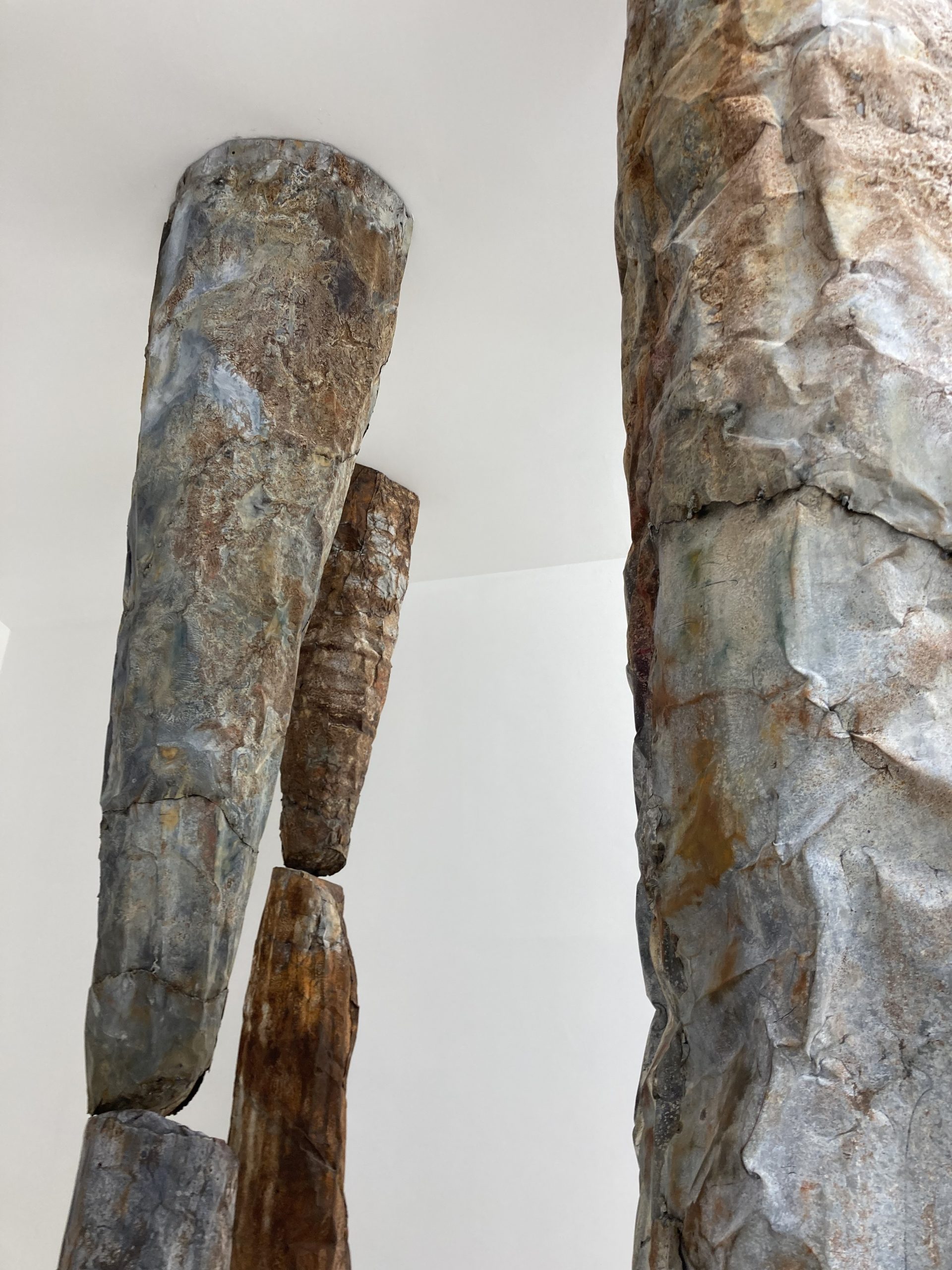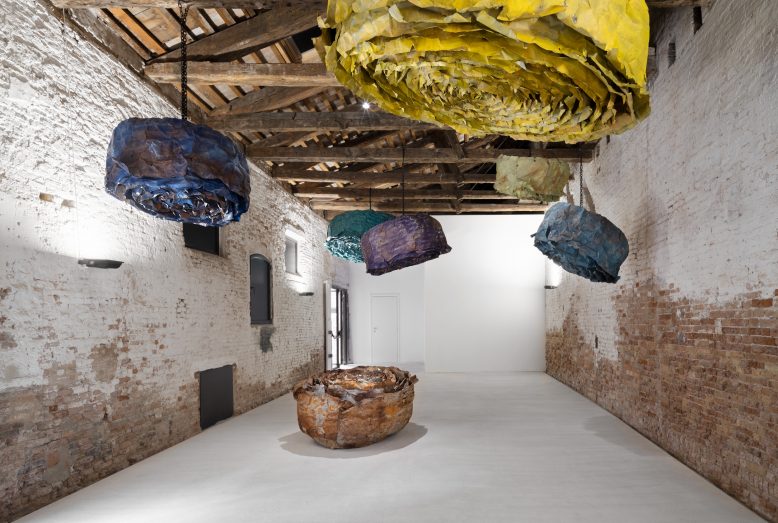Take Your Time by Francesca Leone: a reflection on time
What is time? Relying on the philosopher Martin Heidegger, we would understand time as a succession of instants.
If we then took a magnifying glass to observe the concept of time in human beings, we would realise what this entails: fascination but deterioration, habits but novelty, frenzy but the need to slow down.
In the spaces of the Salone Verde in Venice, the Roman artist Francesca Leone proposes her interesting reflection on the passage of time.
The areas are masterfully designed with the aim of placing the visitor in a different perspective from the usual one that imposes everything and immediately.

Francesca Leone, Take Your Time – Salone Verde, Venice 2022
Proceeding from room to room , the viewer is led to focus on the works: ‘looking up’ is the watchword of this exhibition.
Therefore, our perspective changes, the path deliberately leads people to lose themselves, both in space and in time: the works and the spaces totally capture the attention.
If for the viewer time stands, the works tell a different story: the materials bear the signs of the wear and tear of time.
The artist carefully selected metal sheet panels according to their degree of wear, which she then coloured through oxidation and dyes, creating elegant chromatic dances.
On the ceiling of the first room, in a large grille we see jammed papers, cigarette butts, chewed chewing gum, dirt. Caught up in observing this upside-down space, we do not realise that we ourselves are part of the work: one wall of the room is a shop window.
Moving on, sheet metal, a hard and sharp material, is used to represent first pretty, majestic flowers, petal after petal, and then it takesthe form of enormous stalactites, and then again of draperies bearing the signs of wear and tear, which are nothing more than signs of memory, as if to represent a manifesto.

Francesca Leone, Take Your Time – Salone Verde, Venice 2022
Finally, the most representative installation: a labyrinth of perforated sheet metal, in which the reference to the famous artist Lucio Fontana is evident. If at first the darkness of this spiral is frightening, as we proceed, the light sources increase until we finally see the sky.
The importance of waiting is thus made clear.


